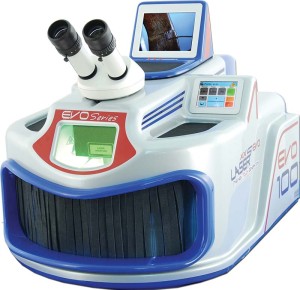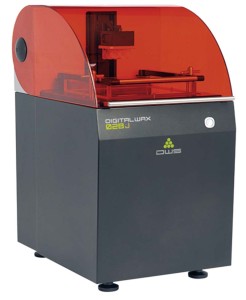A snowball effect

There is a virtual tsunami of utility within the jewellery industry regarding innovation in manufacturing technology. From laser and impact engraving to additive manufacturing (AM), newer and updated existing technologies are helping to bring the all-important ability to rapidly prototype and customize into the more traditional light-manufacturing and designer-to-retail environment. (You’ll find jewellery-specific examples on these pages.) I have extensive experience with AM (more commonly referred to in the jewellery industry as 3D printing), so I spent a disproportionate amount of my time perusing this particular area of CES.
In keeping with technology research firm Gartner’s ‘hype curve’ concept, we have observed sporadic adoption of AM by the jewellery industry despite a great deal of media attention about how it would change our lives. As newer technology has become more available and cost-effective, it seems many manufacturers within our industry, both large and small, have arrived at the plateau of productivity. But many more have yet to discover this useful technology.

Statistics for market potential in the jewellery industry are scarce, but I think a realistic guess would put AM as having penetrated far less than 20 per cent of the entire worldwide jewellery industry market. This seems to be confirmed by statistics reported by Phil Reeves, principal consultant for Econolyst Ltd. He says the use of AM today is less than 13 per cent of the G8 opportunity and less than 1.1 per cent of the total G20 opportunity. These statistics may provide insight for a progressive retailer. AM technology has, in a very real sense, reached its own stage of maturity—the technology is much more accessible now in both cost and utility. However, from the user’s standpoint, there is still a learning curve involved in adopting it, which may impede or delay some traditional retailers. For others, it may become a springboard to increased sales.
As such, I believe there is or will be a snowball effect driving this technology deeper into our industry. There is an ongoing trend toward customization in many consumer segments; to satisfy the public’s desire for the unique, jewellery retailers can pursue the ability to design for and with their clients. A feedback loop occurs as more consumers see the precision and detail made possible by AM and they then bring the desire for that precision into your retail environment. Migrating these services in-house with the addition of a designer or designer/goldsmith can offer a retailer an advantage in terms of time and cost over using a service bureau and an outside manufacturing facility, provided there is a beneficial return on investment (ROI).





